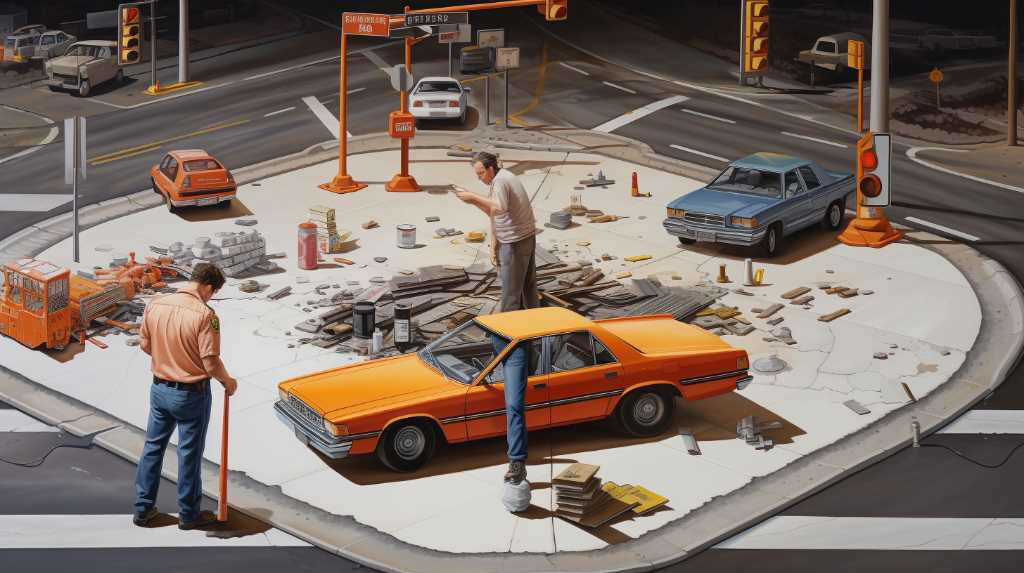
In truck accidents, sometimes it’s not clear who is at fault. This can make figuring out the next steps difficult. When nobody seems to be at fault, it’s important to look closely at the accident to understand what to do legally. Insurance policies can be different in these cases, so knowing what your insurance says is key.
Bad road conditions, truck problems, or unexpected events can make it hard to tell who caused the accident. If it’s still not clear who is at fault, people might need to find other ways, like mediation, to solve the issue. It’s vital for everyone involved to know their rights and how they are protected when the cause of the accident isn’t obvious.
Understanding No-Fault Incidents
In the context of truck accidents, a no-fault incident refers to a situation where an event occurs without the negligence or direct responsibility of any involved party. This classification is crucial in understanding how victims recover damages and how insurance claims are processed.
No-fault incidents often trigger the application of no-fault insurance coverage, where parties involved may file a claim with their own insurance company regardless of who caused the accident. This system aims to streamline compensation for losses such as medical expenses and lost income without the need for establishing liability. However, the specifics can vary by jurisdiction, as some regions operate under traditional tort-based systems, while others follow hybrid models.
It is essential to analyze the governing laws to determine the precise impact of a no-fault designation on the resolution of a truck accident claim.
Insurance Coverage Implications
In a truck accident where no one is at fault, each person must look at their own insurance to figure out what costs are covered. Insurance companies check your policy to see what’s covered, like collision, comprehensive, or protection if the other driver doesn’t have insurance.
If you live in a state with no-fault insurance, personal injury protection (PIP) pays for medical bills right away, no matter who caused the accident. But if the accident happened in a state that does blame someone, or if it’s not clear who’s at fault, figuring out who pays can get complicated, and insurance companies might have to talk a lot to sort it out.
It’s really important to know how policy limits, what you have to pay before insurance kicks in (deductibles), and what’s not covered (exclusions) affect how much money you might get. Looking closely at the part of your policy that spells out your coverage (declarations page) can help you understand what’s covered and make smart decisions when dealing with these tricky situations.
Determining Liability Complexities
Assessing liability in a truck accident devoid of clear fault can involve navigating a labyrinth of legal and insurance-related nuances. The process is inherently complex due to the multitude of factors that can contribute to a truck accident. These include, but are not limited to, vehicle malfunction, environmental conditions, and road design.
In such cases, liability may be distributed among multiple parties, ranging from the trucking company to governmental entities responsible for road maintenance. Forensic experts may be called upon to reconstruct the accident and provide insights into the contributing factors, while legal professionals scrutinize the details against the backdrop of local and federal regulations.
The outcome hinges on a thorough and methodical examination of all possible angles, demanding a high degree of legal acumen to untangle the threads of responsibility.
Alternative Dispute Resolutions
Truck accidents can be complicated, and it’s often hard to figure out who is at fault.
Alternative dispute resolutions (ADRs), like mediation, arbitration, and negotiation, help people solve their issues without going to court. These methods involve a neutral person who helps everyone agree.
They are usually less hostile, cheaper, and faster than fighting in court. In truck accidents where it’s not easy to tell who’s to blame, ADRs are very useful.
They allow for out-of-the-box solutions and can handle tricky questions about who caused the accident and who should be held responsible. This way, ADRs help solve problems that could drag on and become very heated without having to rely on the win-or-lose situation of a trial.
They’re a really important option for sorting out these kinds of disputes.
Protecting Your Rights
In the aftermath of a truck accident where fault is ambiguous, each party must vigilantly protect their legal rights to ensure fair treatment under the law.
The initial steps include documenting the scene comprehensively, collecting witness statements, and preserving any physical evidence.
Engaging with legal representation early can be crucial, as an attorney can guide the involved parties through the complexities of trucking regulations and insurance claims. Legal counsel also serves to advocate on a party’s behalf, challenging any unfounded liability claims and negotiating with insurance companies.
Furthermore, timely filing of all necessary legal documents is imperative to prevent forfeiting rights due to technicalities such as statutes of limitations.
Each action taken should be methodically considered to maintain an equitable position in any subsequent legal proceedings.
Conclusion
When a truck accident happens and it’s unclear who is at fault, figuring out insurance and who should pay for damages can be tricky. This usually means that people may need to look into ways to solve the problem outside of court, like mediation.
It’s really important for everyone involved to understand the legal rules and get advice from lawyers to make sure they’re treated fairly. This is especially true where no-fault insurance laws and the rules of who is legally responsible (tort law) come into play.